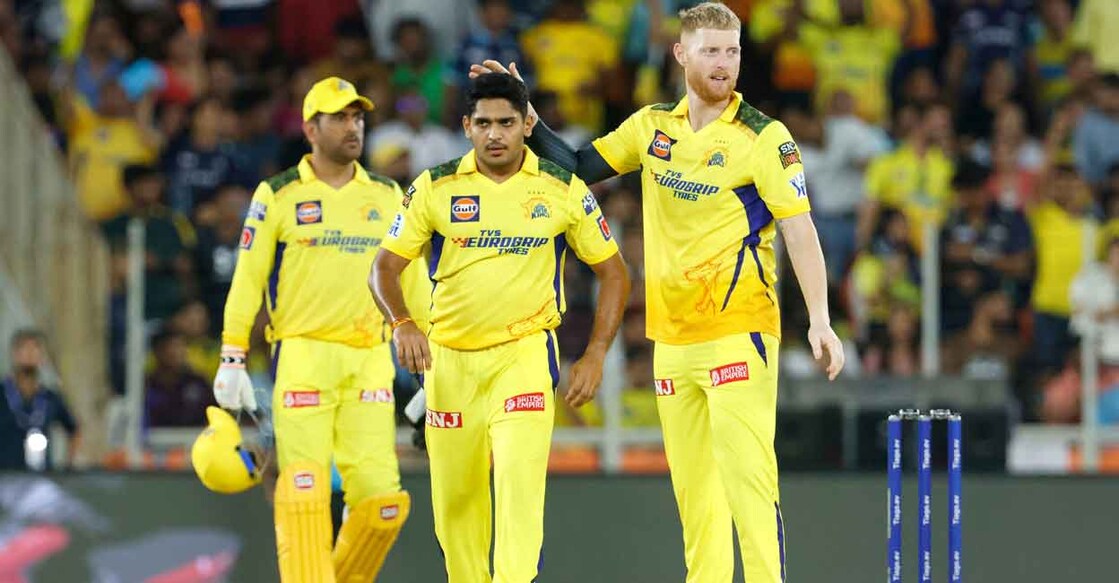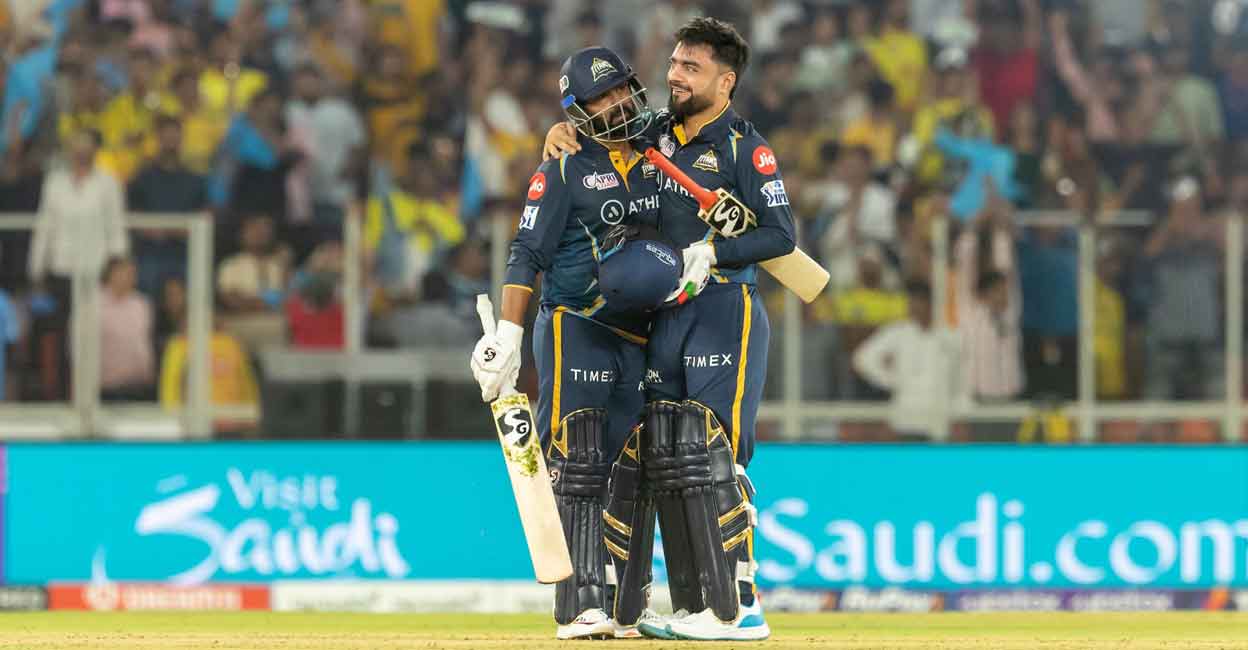Column | Impact of rule changes in IPL

Mail This Article
The 16th edition of the Indian Premier League (IPL) got off to a glittering start at Ahmedabad during the week that went by. The huge stadium, named after Prime Minister Narendra Modi, was packed to its full capacity. The galaxy of celebrities and cricketing superstars gave the required glamour quotient while the music and dance on the sidelines kept the crowd enchanted. The display of laser works that lit up the stadium and the sky over the city lent an air of the surreal amid the fast-paced action taking place in the middle. All things considered, the event that marked the start of the world’s most popular T20 league was as fit a curtain-riser for the championship as the opening match that took place between Gujarat Titans (GT), the title holder, and Chennai Super Kings (CSK).
The inaugural game lived up to the expectations as the match went into the last over, with the hosts edging out the visitors in a close encounter. The sight of Hardik Pandya, India’s current captain in T20 format walking out for the toss with Mahendra Singh Dhoni, nation’s most celebrated skipper in this format showcased how change and continuity go hand in hand in Indian cricket. Pandya, the buccaneering all-rounder, promises to be the future of the sport while Dhoni, the all conquering leader of the yore, symbolises the past. And together they embody the present, with its multifarious opportunities and challenges.
The new edition of the IPL brings with it some changes in the rules governing the game as well. The introduction of the concept of 'Impact Player' is the most discussed one among these innovations. Simply put, this means that both teams will have the opportunity of replacing one of the cricketers nominated in the playing eleven with a full time substitute, who can both bat and bowl, if needed. The replaced player will not be able to take any further part in the match, even as a substitute. This gives the teams the leeway to bring in a batsman or a bowler to the playing side, in addition to the eleven already nominated for the game. However, not more than 11 players can bat and there cannot be more than 11 players in the field at any time the game is in progress.
Further, provision is also made for allowing captains to nominate their playing elevens after the toss. At the time of the toss, captains can have two different elevens with them - one in case the side is batting first and the other if they are bowling. The final eleven is required to be decided only after the toss depending on whether the side is batting or bowling. The captains are also required to nominate five substitutes in the list of players exchanged. The 'Impact Players' can be chosen only from among the substitutes so nominated by the captains.
The Board of Control for Cricket in India (BCCI) had tried out a version of 'Impact Player' in the Syed Mushtaq Ali Trophy T20 Championship in the 2022-23 season. However, then it was stipulated that the captains should nominate the 'Impact Player' before the toss and he had to brought in before the 14th over of the innings, whether batting or bowling. It can be seen that the provisions for 'Impact Player' in the IPL offers a further improvement on this by removing the clause relating to timing of entry and allowing the captain the flexibility of choosing from a among five cricketers. The think tank, who recommended this provision, feels that this will add a “tactical and strategic dimension to the game” while also helping to negate the importance of toss in deciding the fate of the match.

Thus, if the side batting first loses quick wickets, the captain can decide to send in a batsman who can steady the ship and gradually wrest the control of the game. On the other hand, if the side gets off to a good start, a pinch-hitter can be deputed as the 'Impact Player' to accelerate the scoring during the last overs. Similarly, the side bowling first can pack the eleven with spinners, knowing well that they can replace one of them with a batsman when their turn at the crease arrives. A side batting first can also bring in an extra bowler, who bowls well at the death, should they desire to do so, while defending their total. In short, this concept introduces an element of uncertainty and unpredictability, which, the organisers feel, will add to the excitement and thrill that are an integral part of T20 cricket.
The only restriction that is in force with regard to the 'Impact Players' is that its use should not lead to more than four overseas cricketers playing the game. The total number of overseas players who can be part of the playing eleven has been capped at four and this restriction continues to override the 'Impact Player' clause. Thus, if a side nominates four foreign players in the playing eleven, then they will not be able to bring another overseas cricketer as an 'Impact Player'. Recent studies have shown that during the last four seasons sides have been taking the field with less than their full quota of overseas players. One can suggest that an obvious corollary is that more Indian players will get opportunities, either as part of the regular eleven or as 'Impact Players'.
In the match between GT and CSK, Tushar Deshpande, a right-arm medium-pacer of the latter side, came in as an 'Impact Player', thus becoming the first to perform this role in the IPL. He substituted for Ambati Rayudu and opened the bowling for his side. GT brought in left-hand batter Sai Sudharsan as 'Impact Player', in the place of Kane Williamson who got injured while fielding. Neither Deshpande nor Sudarshan did anything significant and could not achieve much impact.

There is also a school of thought that this rule will bring down the importance of the conventional all-rounder as both sides have the option of playing an extra batsman or bowler, depending of the situation on the field. That looks too farfetched a prophesy given the fact that good all-rounders have contributed handsomely to the game, in whichever format it is played. There also exists the possibility that the option to use an extra specialist may prompt captains to place players in this category among the list of probable 'Impact Players'. Any of these permutations and combinations are possible and one will have to watch and analyse real life situations as they unfold to see how this rule is utilised by the sides and the effect it has on the final outcome of the game. These are early days still and one can have a clarity of the significance of this innovation only when the whole tournament is over.
The other new provision brought in is to allow players to seek review for no-balls and wides. Presently the Decision Review System (DRS) is allowed only for decisions relating to dismissal of the batsmen or appeals made in this regard. Bringing faults of the bowlers also with its purview certainly increases the scope and coverage of the DRS. However, the IPL has not changed the cap of two unsuccessful reviews per side. There is also a new penalty for slow over rate, which involves allowing only four players to be placed outside the 30-yard circle instead of five fielders, for every over completed beyond the scheduled time of 90 minutes. Thus the penalty will be imposed in cricketing equivalent and not in monetary terms, which is a good development.
It can be seen that cricket has come a long way from the days when it was played using a red ball between two sides of 11 men attired in white flannels. The changes in attire, equipment, rules, playing conditions and even the attitude of the spectators has seen the evolution of a sport that was once hailed as “gentlemen’s game” into the grand spectacle that it is today. The way in which cricket is embracing new changes and technologies makes one wonder whether the day is not far off when Artificial intelligence (AI) and associated tools too start making their way to the field of play.
Use of more technical aids and innovations may create level playing fields and accuracy of results. But the to old-fashioned followers of the sport, they tend to take away some of the romance associated with the game. After all, we are human and some mistakes are bound to happen, which only adds to the appeal of a sport. Let there be efforts towards minimising mistakes, but they should not make the game too technical as it will take away the beauty inherent in it.
(The author is a former international cricket umpire and a senior bureaucrat)


